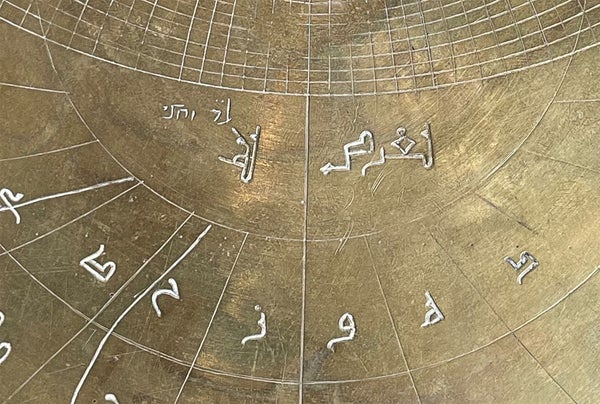How a Rare Islamic Astrolabe Helped Muslims, Jews and Christians Tell Time and Read Horoscopes
A rare Islamic astrolabe discovered in Verona, Italy, reveals how the instrument passed through different countries and cultures
A close-up of the Verona astrolabe shows Hebrew inscribed (top left) above Arabic inscriptions.
The stars that twinkled over medieval Verona have long been known for tragically entangling two young lovers in Shakespeare’sRomeo and Juliet. Now a rare Islamic astrolabe that was recently rediscovered in that Italian city tells an equally riveting story about real stargazers who looked up at those skies.
The circular astrolabe, which is about 19 centimeters across, is particularly remarkable for the multilingual annotations etched directly into its brass surface, revealing the instrument’s journey from Muslim-ruled 11th-century Spain to an Enlightenment-era nobleman’s collection of curiosities. Over its roughly 1,000-year history, the device helped its users tell time and determine cardinal directions from the stars, as well as read their horoscopes.
“It is quintessentially beautiful that you can just handle all these layers of history and science in such a small object,” says University of Cambridge historian Federica Gigante, who found the object last summer in the private collection of 17th-century Veronese nobleman Ludovico Moscardo.
On supporting science journalism
If you’re enjoying this article, consider supporting our award-winning journalism by subscribing. By purchasing a subscription you are helping to ensure the future of impactful stories about the discoveries and ideas shaping our world today.
Astrolabes like this one are made up of rotating parts that depict a two-dimensional model of the heavens. Etched into the thin disk called a plate are two sets of concentric circles. One set is a stereographic projection of Earth, with the North Pole at the center. The circles radiating from the pole indicate specific…
Read the full article here







